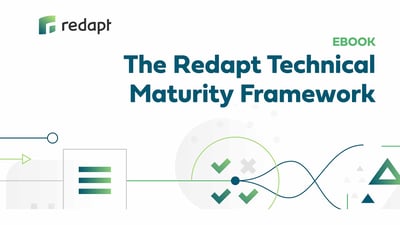As Artificial Intelligence (AI) and Machine Learning (ML) continue to make their way into more and more enterprises, it’s worth examining the trends that are shaping data analytics and how those trends will likely impact businesses going forward.
Thankfully, a recent article from Information Week titled “10 Data and Analytics Trends for 2020” does just that.
The article, penned by Jessica Davis, was inspired by a talk by Gartner analyst and VP Rita Sallam at the organization’s IT symposium, and it touches on everything from augmented data management and natural language processing, to data fabric and blockchain.
But it is one topic in particular that we want to touch on here. Specifically, number seven on the list which covers explainable AI (emphasis ours):
7. Explainable AI
"We believe this will be a critical lynchpin for you to be able to govern the increasing use of AI," Sallam said. That's because models are growing more complex and opaque. Organizations will need to be able to explain results for internal monitoring and also to comply with regulations. Organizations will need to know if there's a privacy risk in a model or if bias is detected.
If you think about AI and ML models, particularly the more complex algorithms or deep learning, they’re essentially black boxes. An input goes in, an output you’ve identified comes out. Rinse and repeat.
But as the models become more complicated and pervasive, so does the challenge of combating bias. Not just statistical bias, but societal bias.
![]()
The next analytic hurdle
This potential for bias—whether it’s income, race, geography—is why the next hurdle that needs to be cleared for AI and ML is the ability to explain results effectively and, if need be, quickly back out of a running model to address concerns.
Right now, most AI and ML models are not built to address and correct things like societal bias. As a result, it’s easy for an enterprise employing these models to place themselves at risk.
Working the problem
The solution for this problem is out there, and it’s definitely being worked on, but as AI and ML continue to gain steam in business, the trend will definitely be for enterprises relying upon ML models to tread carefully.
Or, as Gartner predicts in the Information Week article, “over 7% of large organizations will hire AI behavior forensic, privacy, and customer trust specialists to reduce brand and reputation risk” by the year 2023.
That’s a solid prediction.
To learn more about properly incorporating AI and ML, or to determine the right database strategy for your company, schedule a call with our team of experts.
Categories
- Cloud Migration and Adoption
- Enterprise IT and Infrastructure
- Artificial Intelligence and Machine Learning
- Data Management and Analytics
- DevOps and Automation
- Cybersecurity and Compliance
- Application Modernization and Optimization
- Featured
- Managed Services & Cloud Cost Optimization
- News
- Workplace Modernization
- Tech We Like
- AWS
- Social Good News
- Cost Optimization
- Hybrid Cloud Strategy
- NVIDIA
- Application Development
- GPU








